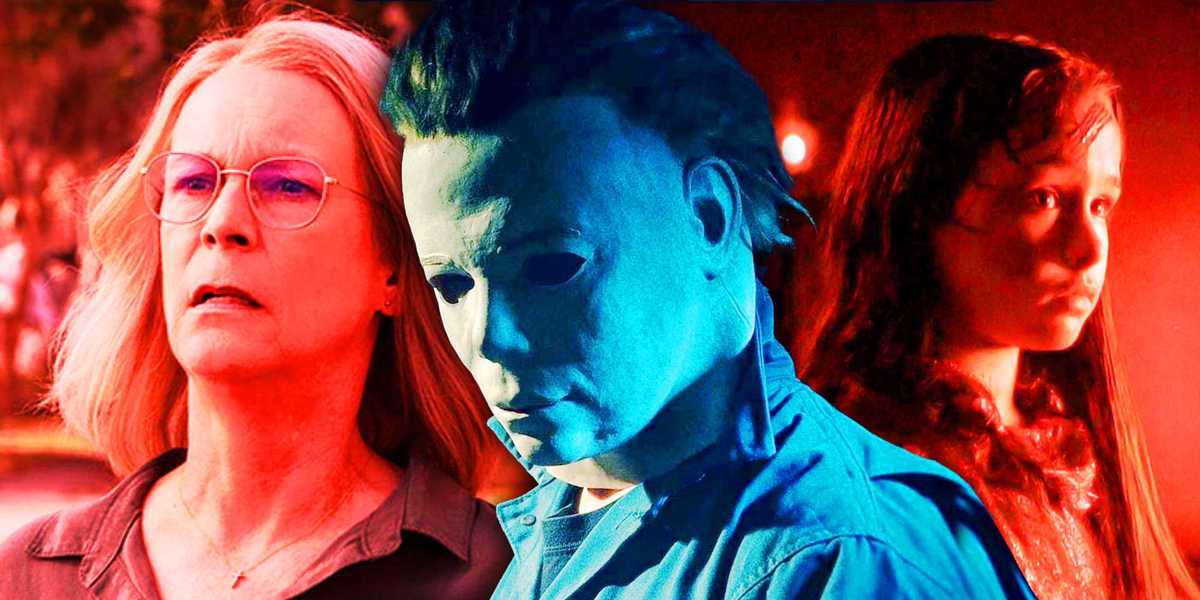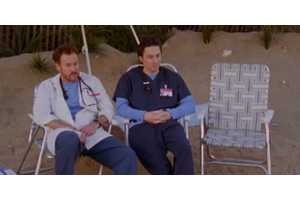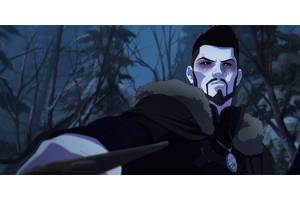Halloween 1978 Ending Explained
John Carpenter’s original Halloweenis a minimalist masterpiece of the horror genre, although its numerous follow-ups spoil the simple power of its ending. The 1978 movie, directed by horror master John Carpenter and written by Carpenter and Debra Hill, follows Michael Myers, the near-invulnerable "Shape" who escapes from his mental hospital and continues the killing spree he started in the town of Haddonfield 15 years earlier on Halloween night. The movie grossed $70 million on a budget of just $325,000, spawning a franchise that has rebooted its own timeline multiple times.
While a string of sequels of rapidly diminishing quality eventually fizzled out, the robust charm of the legendary original Halloween spawned a timeline-resetting legacy sequel with Halloween H20: 20 Years Later, a pair of remakes from director Rob Zombie, and then another legacy sequel trilogy from director David Gordon Green. The ensuing installments all took a shot at reframing and recontextualizing the first film. As such, it’s worth exploring exactly what happens in the original Halloween, and how the complex continuity changes these facts.

Watch All 13 Halloween Movies In This Order
The Halloween saga has different timelines after going through a couple of retcons, and here's the best order to watch all 13 movies.
What Happened To Michael Myers At The End Of 1978's Halloween
Michael's Body Vanishes (So He Can Return To Kill Again)
The original Halloween ending is a sinister finale that refuses to leave the audience comfortable. In Laurie Strode’s climactic confrontation with Michael Myers, she stabs him square in the chest. Yet, this isn’t enough. Michael comes for Laurie again, only for Dr. Loomis to arrive in the nick of time, shooting Michael six times and knocking him off a balcony. The nightmare seems to finally be over, but when Laurie and Loomis look to the spot where Michael fell, his body is gone. Laurie is safe, but the malevolent figure of Michael Myers is still free to stalk the night.

Every Halloween Movie Ending Ranked
Michael Myers always dies at the end of any Halloween movie and manages to survive. However, some endings are better and have a bigger impact.
Why Michael Myers Targeted Laurie Strode
Laurie Reminds Michael Of His Sister
While some of the later sequels across the different Halloween movie timelines find contrived reasons for Michael Myers’s hatred of Laurie Strode, his motivation in the 1978 original is simple - nostalgia. Michael, as a single-minded killing machine, is determined to continue his spree of murders which he began as a child in 1963, when he murdered his own sister.
Michael seeks to reenact this murder by targeting teen girls who remind him of her. Laurie simply happens to be the first person Michael sees who fits the profile. It’s this seeming randomness that defines the horror of Michael Myers. If The Shape’s actions can’t be rationalized, they can’t be avoided.
Was Michael Myers Laurie Strode's Brother?
The Family Ties Between Michael And Laurie Were Added Later On In The Franchise
One of the most controversial details of the later Halloween canon is the concept of Laurie Strode being Michael Myers’s long-lost sister. The fact is introduced in the 1981 sequel Halloween II, which was once again written by John Carpenter and Debra Hill, and is a defining detail of Michael’s motivation in the original Halloween timeline, the Halloween H20: 20 Years Later timeline, and Rob Zombie’s remake films. Only David Gordon Green’s trilogy timeline, which disregards every film in the franchise except for Carpenter’s original Halloween, does not feature the family connection.
While it was Carpenter himself who wrote in the detail, the director came to regret it. Indeed, Carpenter and Hill weren’t enthusiastic about Halloween II, and he called the sister plot point “a function of having decided to become involved in the sequel to the movie where I didn't think there was really much of a story left” (via Movieweb). The plot point went on to become even more convoluted in the original Halloween timeline, transforming the franchise into a twisted, melodramatic family revenge plot rather than a chilling story of unreasoning evil. Nevertheless, the 1978 Halloween film does not acknowledge the brother-sister connection.
Why Michael Myers Returned To Haddonfield
The Shape Is A Creature Of Habit
While later movies in the original Halloween timeline retconned Michael’s return to Haddonfield into a desire to reunite with Laurie, The Shape’s reasoning is simple in the 1978 film. Much like his choice to continue murdering young women of his sister’s age, Michael’s decision to return to Haddonfield following his escape from Smith’s Grove Sanitarium is motivated by a desire to finish what he started. Michael is a force of pure evil, whose only desire is to kill. He returns to Haddonfield because it’s the only place he knows, and he returns to killing because it’s the only thing he does.
Michael Myers' Motive For Killing His Sister In 1963 Explained
His Sister Was Punished For Her Sexuality
The chilling opening scene to Halloween follows the point of view of a six-year-old Michael Myers as he goes into his sister’s bedroom and stabs her to death with a kitchen knife. The act seems to be the genesis of Michael’s murderous tendencies, and it’s this act that he commits himself to reenacting 15 years later. Yet even this initial murder is without an overt motivation. There’s a clear abhorrence of sexual activity baked into the act, as Michael kills his half-naked sister straight after she has presumably had sex with her boyfriend, but this doesn’t quite satisfy.
However, there’s another possible explanation that only enhances the horror of the act. It’s Halloween night and, judging by Michael’s clown costume and the absence of his parents, his sister was probably supposed to take him trick or treating. Michael’s sister must have blown off their plans to have her boyfriend round to the house. Michael’s anger at his sister causes him to murder her and breeds hatred for the teenage sexuality that caused her to ruin Halloween. For Michael to commit murder over so petty a slight implies that the spirit of evil was always within him and was only waiting for the thinnest of excuses to emerge.
The Real Meaning Of The Halloween Ending
Michael's Missing Corpse Is A Sly Metaphor
The ending of 1978's Halloween feels relatively straightforward by modern standards, but that's only because it was so influential. Laurie finding Michael's corpse had vanished feels the ending of dozens of modern slasher-horror movies - and the reason for this is that Halloween arguably wrote the blueprint for the subgenre. This means that, at the time it was released, the ending of Halloween and the decision to have Michael's body disappear was made with thematic depth in mind, rather than simply leaving a story open-ended enough for a sequel.
While, of course, Michael still being alive at the end of Halloween was also a sequel-spawning plot development, it was also representative of the themes behind the silent masked villain. The look and mannerisms of Michael Myers were conceived to represent fear itself (which is why he's often simply credited as 'The Shape'). Laurie being unable to confirm the terror of Michael Myers was truly over at the ending of Halloween is representative of the fact that the fear will never truly leave her.
How The Halloween Ending Was Received
The original 1978 Halloween has a near-untouchable legacy within the slasher genre and performed relatively well at the box office when it released, it was (surprisingly) panned by contemporary critics. The majority of archived reviews from the late 1970s describe Halloween as an overly morbid thriller. What's more, many critics also attack the now-legendary horror director John Carpenter with unfavorable comparisons to the likes of Alfred Hitchcock.
Considering the legacy of the 1978 Halloween and the franchise it spawned, reading the many reviews from the time it released feels strange in some ways. There were positive reviews of Halloween too - the criticism wasn't universal - but these didn't pick up on the ending, instead focusing on the jumpscares and overall tone. While the ending of Halloween has since become a defining moment for the slasher genre, it wasn't seen as such when the film released in 1978.
How Halloween Sequels Changed The Original Ending
The Halloween 1978 Ending Has Been Redefined Time And Time Again
Since Halloween has seen several direct sequels, two legacy sequels, and a full-on remake, the original film has been recontextualized numerous times. Michael Myers and Laurie Strode’s sibling connection changes the former from an ephemeral force of evil to an ordinary man with a personal obsession. Moreover, while the punishment Michael endures at the end of 1978’s Halloween leaves the vague and unsettling implication that Michael Myers is somehow supernatural, many of the sequels are frustratingly direct in confirming this fact.
The original timeline’s sequels explain that Michael is empowered by a sinister curse from the demonic “cult of the thorn,” which not only grants Michael invulnerability but also compels him to murder his family, including Laurie. In David Gordon Green’s reboot trilogy, the franchise is hurt by a Halloween Kills scene in which Michael is shot, stabbed, and brutally beaten by an entire mob of people, only to recover and massacre them. Both cases confirm that Michael is indeed supernatural, spoiling the uncanny ambiguity that makes The Shape so unsettling in the original Halloween.

Halloween
- Release Date
- October 27, 1978
- Runtime
- 91 Minutes
- Director
- John Carpenter
- Writers
- John Carpenter, Debra Hill
- Sequel(s)
- Halloween II, Halloween III: Season of the Witch, Halloween 4: The Return of Michael Myers, Halloween 5: The Revenge of Michael Myers, Halloween: The Curse of Michael Myers, Halloween H20: 20 Years Later, Halloween: Resurrection, Halloween, Rob Zombie's Halloween II, Halloween, Halloween Kills, Halloween Ends
Cast
 Donald Pleasence
Donald Pleasence















Your comment has not been saved